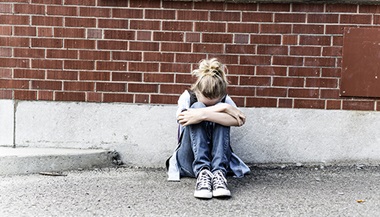How to Foster Cultural Awareness at Home
Featured Expert
Many minority households routinely have open discussions about racial issues and how they impact their daily lives. White families, on the other hand, sometimes are uncomfortable with such discussions even amid news coverage related to systemic racism and the Black Lives Matter movement. Johns Hopkins All Children's pediatric neuropsychologist Sakina Butt, Psy.D., ABPP-CN, offers advice for parents in all families on how to encourage and foster these discussions.
Where do we start?
- Be open! Often the first step in talking to our kids about racism involves putting aside personal feelings and experiences. Parents and caregivers can educate themselves first through books, videos, podcasts, websites and by not being afraid to have conversations with others.
- Start the conversation by talking about your family (e.g., who you are and where you come from), and then talk about the wonderful variety of human beings living in our world. This can be a nice way to celebrate diversity and introduce that many people in the world have very different lives and experiences from us.
- Highlight how people coming together to give voice to others’ struggles is a great way to show compassion and kindness. It reminds us that we are all human beings with feelings, hopes, dreams and the capacity to love.
Break it down by developmental level
Preschool
- For this age group, you may start with the variety of animals then talk about how people also have variety in where they live, what they look like and how they talk to each other.
- Talk about appearance, such as hair and skin color, and how sometimes people are mean to others or not nice because of these differences and that makes others feel sad and mad.
- It may be helpful to use examples from your child’s favorite television show, movie or book to illustrate this concept (for example – in the movie Zootopia when the Scout group is mean to the Fox).
School-Age
- Engage in conversation about how people come from different backgrounds and how sometimes people are treated unfairly. Ask your child if they have ever seen another child who was teased or bullied because of the color of their skin, the way they dressed, etc.
- Most school-age children hopefully have received some education about seminal historical events (such as those related to Martin Luther King or Gandhi), so you can use what they have learned to help guide the discussion.
Adolescents
- Discuss the persistence of racial inequity over decades and how this has led to growing frustration and anger resulting in movements like Black Lives Matter and protests around the globe. Emphasize how every person needs to take a stand against racism and discrimination in order for change to happen.
- Give examples such as speaking up in a friend group when someone tells a joke or standing up to classmates when they observe unfair or mean treatment based on the person’s skin color or other physical differences. Talk about local advocacy and be open to adolescents if they want to take part in change efforts, like volunteering on a local community group initiative or participating in a protest.
Explain the benefits of diversity
- Children tend to understand abstract concepts like diversity and inclusion better when it is relatable. Talking to children about how they enjoy different foods, clothing, games and activities is a good way to show them the benefits of diversity in their everyday lives. Once children see this link, it will be easier for them to understand how diversity in people allows us to experience how variety makes life more interesting, exciting and fun.
Take action!
- Start talking about concepts related to culture, diversity and inclusion early. There are great books for parents that can help get you started.
- Look around your environment and consider the people in your life. Do you notice diversity in your friends, artwork, reading materials and children’s toys/games? Attempting to be inclusive in all aspects of our life helps to model and encourage openness in children and helps prevent racism.
- Teach kids how to stand up to teasing and bullying with conversations and role-playing. Use resources from the library and children’s programming for examples on how to engage with your kids about these important issues.
“Conversations about race and diversity can be uncomfortable for parents, but kids are going to encounter these issues throughout their entire lives,” says Butt. “The earlier we start learning about them in a home environment, the better we can help our children to handle these issues in an appropriate way as they grow up.”
Center for Behavioral Health at Johns Hopkins All Children's Hospital







